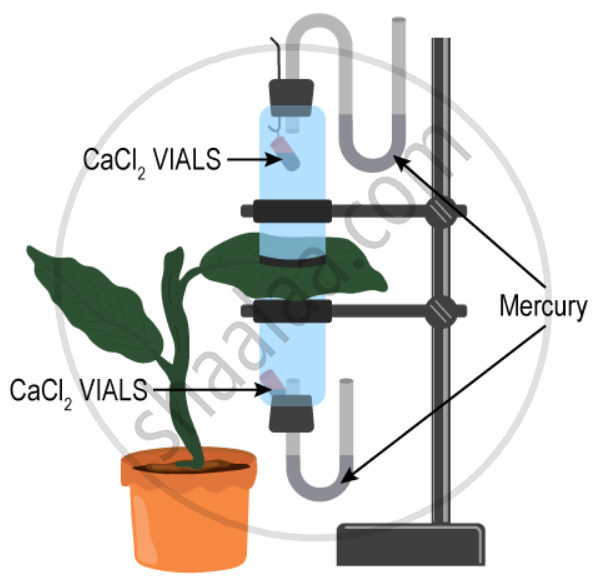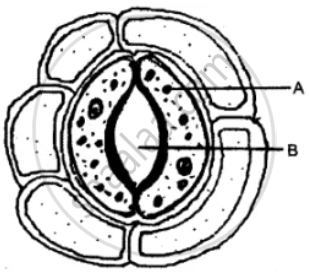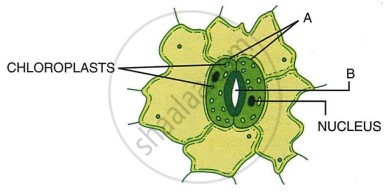Advertisements
Advertisements
प्रश्न
When guard cells are flaccid, the stoma must be ______.
विकल्प
Open
Neither open nor closed
Closed
None of these
उत्तर
When guard cells are flaccid, the stoma must be closed.
Explanation:
A flaccid guard cell closes the stomata by relaxing its inner membrane. Likewise, the inner wall pulls outward to open the stomata when the guard cells become turgid.
संबंधित प्रश्न
Given ahead is a diagram of an experimental setup to study the process of transpiration in plants. Study the same and then answer the question that follows:

- Name the colour of dry cobalt chloride paper.
- Is the experimental leaf a monocot or a dicot? Give a reason to support your answer.
- Why are glass slides placed over the dry cobalt chloride papers?
- After about half an hour, what change, if any, would you expect to find in the cobalt chloride paper placed on the dorsal and ventral sides of the leaf? Give a reason to support your answer.
The apparatus shown in the following diagram is Garreau’s potometer designed to demonstrate unequal transpiration from the two surfaces of a dorsiventral leaf. Before keeping the leaf in between the cups, anhydrous calcium chloride (CaCl2) contained in two small vials were weighed and placed in both the cups. The ends of the cups were closed with corks through which two mercury manometers were connected. After few hours, CaCl2 vials were taken out and weighed again.

What is the purpose of using a manometer?
Differentiate Between Cobalt chloride paper and Goat’s bladder.
The diagram below represents a structure found in a leaf.

Study the same and answer the questions that follow:
(i) Name the pis labeled A and B.
(ii) What is the biological term for the above structure?
(iii) What is the function of the part labeled A?
(iv) Mention two structural features of A, which help in the function mentioned in (iii) above.
(v) Where is this structure likely to be found in a leaf?
(vi) The above structure helps in the process of transpiration. Explain the term transpiration.
(vii) How many other cells are found surrounding this structure as seen in the diagram?
Given below are the diagrams of a certain structure in plants in two conditions.

(i) Name the structure shown.
(ii) Name the parts numbered 1-5.
(iii) What is the most apparent difference between A and B in the structure shown?
(iv) Describe the mechanism which brings about the change in the structure depicted in A and B.
Draw a labeled diagram of the stomatal apparatus and label the following in it: Stoma, Guard cells, Chloroplast, Epidermal cells, and Cell wall.
Choose the Odd One Out
Mention the differences between stomatal and lenticular transpiration.
Give a reason/suitable explanation.
More transpiration occurs from the under surface of a dicot leaf.
Given below is the figure of a stoma. Study the same and answer the following questions:

- Label the guidelines A and B.
- Write the exact location of the above-mentioned structures.
- Mention one important role of structure A.
- Write three important roles for structure B.
- Redraw the same figure when structures A are in flaccid condition. When does the flaccid condition occur?
